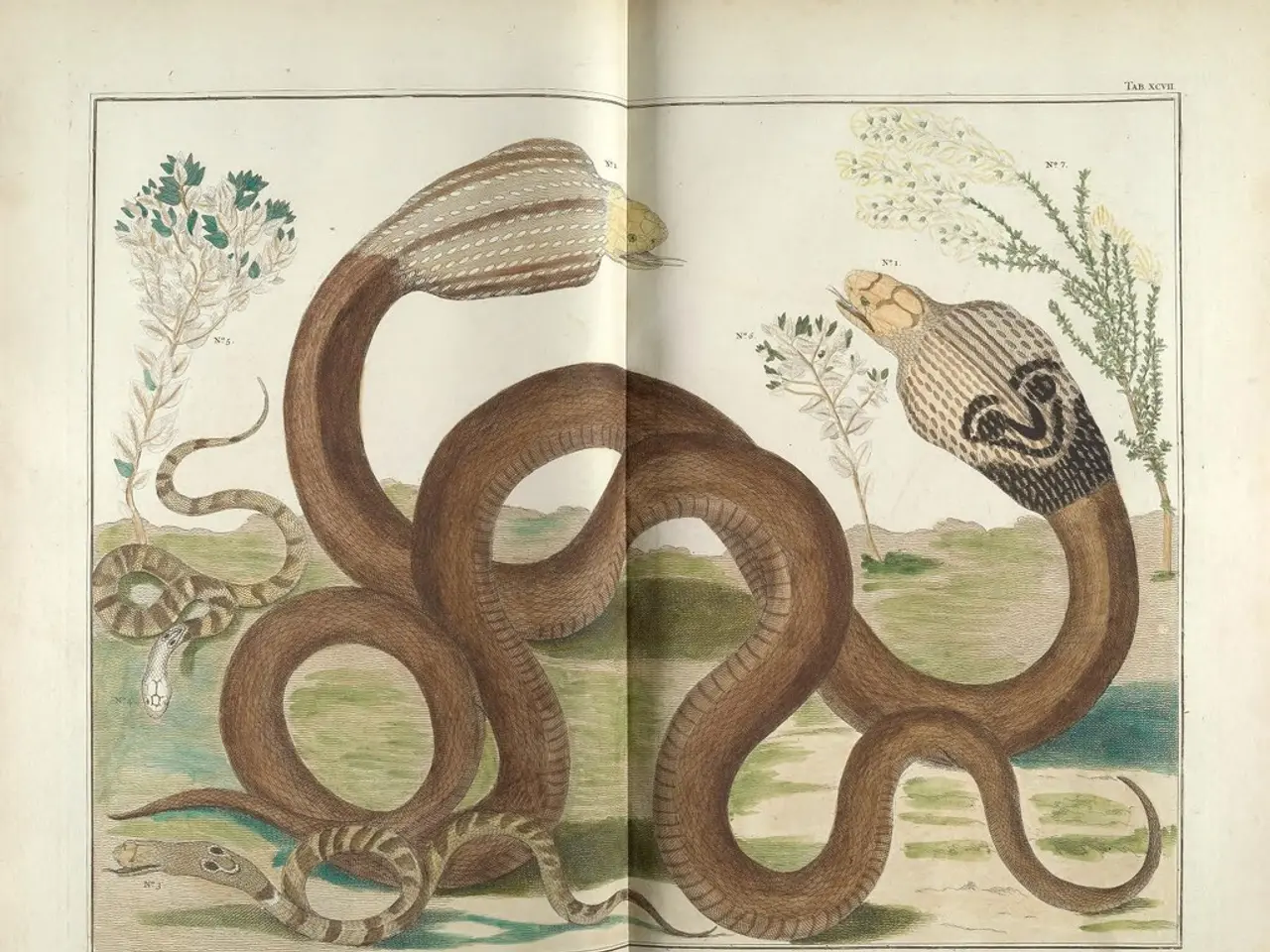Night-moving houseplants to enhance your spooky interior decoration during this season
Autumn is a perfect time to bring some dynamic foliage into your home, and five houseplants known for their distinctive leaf movements can add a dramatic effect to your interior. These plants exhibit notable leaf folding, closing, or motion in response to light or touch, enhancing indoor ambiance with their captivating foliage behaviour.
Firstly, the Prayer Plant (Maranta), a member of the Marantaceae family, is a popular choice. Its foliage moves inwards like praying hands at night, a process called nyctinasty, which helps it maximise light exposure. The motor organ responsible for this movement is called the pulvinus, located at the base of leaf stems.
Another interesting choice is the Calathea, often referred to as the Rattlesnake Calathea due to its wavy edges and unique variegated pattern. Like the Prayer Plant, the Rattlesnake Calathea moves inwards and outwards at night, also through nyctinasty.
The Oxalis, a purple houseplant with clusters of dainty leaves, often called false shamrock, is another intriguing option. Its foliage opens and closes in response to light, reminiscent of butterflies when closed. However, it's essential to note that the Oxalis is not a night-moving houseplant, unlike the Prayer Plant and Rattlesnake Calathea.
Stromanthe triostar, another variegated indoor plant with colours of green, pink, and cream, is another fascinating addition to your collection. This plant also performs nyctinasty, moving its leaves inwards and outwards during the night.
Lastly, we have the Mimosa Pudica, or Sensitive Plant, known for its rapid response to touch. Its leaves fold inward when touched, making it a captivating choice for those seeking a more interactive houseplant.
Caring for these unique houseplants requires specific attention. For instance, the Rattlesnake Calathea requires careful watering, using distilled or rainwater to prevent leaf tip browning. The Stromanthe, on the other hand, needs to wait until the top inch of soil has dried out before watering to prevent root rot. The Prayer Plant prefers bright, indirect light and consistent, but not soggy, moisture levels.
The Oxalis, unlike the others, grows best when the soil is allowed to dry out completely in between watering. A soil moisture meter can be used to identify when it's time to water the Oxalis again.
Venus flytraps, while not a houseplant, are worth mentioning for their captivating leaf movements. When an insect lands on a Venus flytrap, rapid water movement between cell layers triggers the leaf blades to enclose the insect inside, trapping and digesting it for nutrition.
In conclusion, these five houseplants offer a unique touch of nature to your home, with their fascinating leaf movements adding a dynamic element to your interior this autumn.
Read also:
- Peptide YY (PYY): Exploring its Role in Appetite Suppression, Intestinal Health, and Cognitive Links
- Toddler Health: Rotavirus Signs, Origins, and Potential Complications
- Digestive issues and heart discomfort: Root causes and associated health conditions
- House Infernos: Deadly Hazards Surpassing the Flames








